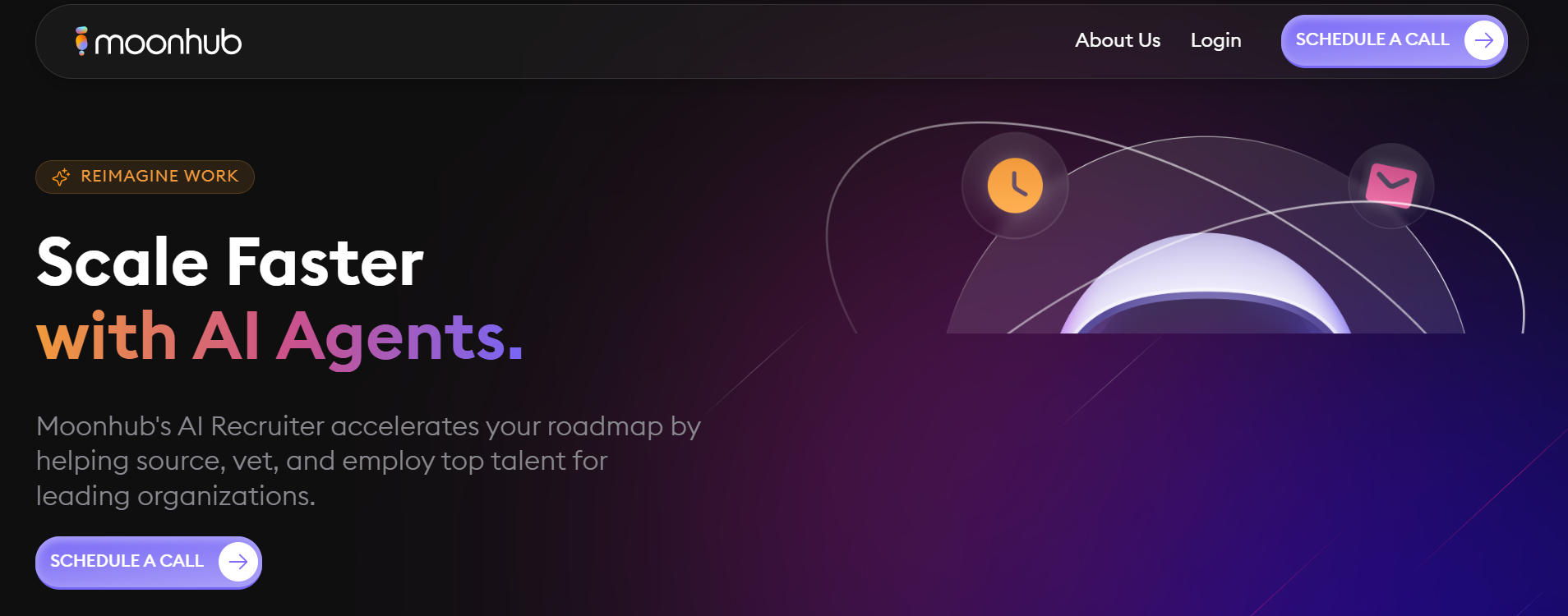观点
未来的工作将走向何方?
先来看看以下工作 :
1移动应用开发者
2社交媒体经理
3优步司机
4云计算专家
5无人驾驶汽车工程师
6数据科学家
7无人机操作员
8可持续发展经理
9 YouTube内容创建者
10千禧世代专家
虽然很多这些工作对我们来说都很熟悉,但这些工作实际上是最新的。这些是10年前不存在的那些工作。未来似乎比以往任何时候都要快得多。虽然我们仍然在争论AI以及它是否会创造更多的就业机会,但世界正在变得更快。根据世界经济论坛的最新报告“未来的工作”,请看一下机器何时可以实现类似人类能力的时间表:
2024年:翻译语言
2025年:组装乐高
2026年:写高中论文
2027年:自动卡车
2029年:对人进行5K比赛
2030年:零售业客户服务
那么我们的工作未来到底是什么?更重要的是,我们是否为此做好了准备?
未来几年,一批新兴角色将变得非常重要
根据该报告,一组新兴角色在未来几年将变得非常重要,而另一组工作档案将变得越来越多余。在所有行业中,到2022年,新兴职业群体的就业份额将从参与调查的公司受访者总人数的16%增加到27%(总共超过1500万工人),而角色下降的就业份额将从目前的31%降至21%。
今天大约一半的核心就业岗位 - 占整个行业的大部分就业 - 在2022年之前将保持稳定。
在接受调查的公司中,总计超过1500万工人,目前的估计数表明,工作岗位减少了98万个,就业岗位增加了174万个。根据全球(非农业)劳动力中大公司雇用的这些趋势推断这些趋势,估计可能会有多达2022个,7500万个就业岗位可能被取代,而可能出现的1.33亿个新角色更适合于新的劳动分工。
那么哪些工作变得多余?
在接受调查的行业中,2018 - 2022年期间预计会变得越来越多的工作岗位是基于日常工作的中级技能白领角色 - 例如数据录入员,会计和薪酬办事员,秘书,审计员,银行柜员和收银员。有些工作容易受到新技术和过程自动化的影响。
与此同时,数据分析师和科学家,人工智能和机器学习专家,软件和应用程序开发人员以及分析师等职位预计会增加需求。
同样,当涉及到需求技能时,分析思维和创新,主动学习,创造力,技术设计和编程等技能将超越手动灵巧,记忆和空间能力以及技术安装和维护等技能。
影响未来就业的因素
根据本报告调查的全球雇主,四项具体技术进步 :高速移动互联网,人工智能,大数据分析的广泛采用和云技术——将成为2018 - 2022年主导的正面因素,影响业务增长积极。它们是一系列社会经济趋势,与国家经济增长轨迹等新技术的传播同步推动商机; 扩大教育和中产阶级,特别是在发展中经济体; 通过新能源技术的进步,实现更加环保的全球经济。
同时,预计会对业务增长产生负面影响的技术和社会趋势包括保护主义抬头,网络威胁,政府政策转变,气候变化的影响; 和日益老龄化的社会。
此外,加速技术的采用,改变生产,分销和价值链的地理位置,以及重新制定必要条件将决定就业的未来。
到2022年,根据本报告调查公司的投资意向,85%的受访者可能或很可能已经扩大了对用户和实体大数据分析的采用。同样,大部分公司可能或很可能已经扩大了对物联网,应用和网络市场等技术的采用,并广泛使用云计算。
为未来做准备
全球各国政府和组织已经开始意识到即将到来的变化,并意识到重新培训的必要性需要成为未来的最前沿。
政府和组织已经开始意识到工作将来会发生变化的现实。然而,还有待观察的是,随着技术进步对现有业务模式和实践提出挑战并改变它们,我们能够以多快的速度适应和重新适应这一不断变化的未来。除了大胆的领导,它还需要一种敏捷的员工终身学习心态。
以上为AI翻译,内容仅供参考。
原文链接:Jobs of the future: Where are they headed?
观点
JOSH BERSIN谈福利:人力资源部门如何投入行动
文/JOSHBERSIN
我刚刚完成了六周的国际旅行,所以我花了很多时间考虑睡眠,运动和饮食。(是的,我照顾好自己,但确实需要付出努力。)
我想谈的是福利市场,这是我访问过的每个城市都有的。我将在今年晚些时候在这个市场上发布更详细的研究报告,但是现在我想分享一些你可能会觉得有用的信息。
1)福利是一个全球主题,不仅限于大城市或发达经济体。
首先,让我告诉你,各地的优先级都很高。我向印度,莫斯科,日本,阿姆斯特丹,巴黎和罗马尼亚的人力资源领导人询问了这个话题。每个小组都告诉我这是一个非常重要的事情。
为什么?
首先,数字化不堪重负。我刚刚与LinkedIn做了一些研究,发现有27%的员工认为他们每周都在浪费一整天的时间来分散注意力,不重要的电子邮件和消息。
其次,人们工作时间更长。40%的美国人每周工作超过50小时,74%的人睡眠不足。我直接从公司那里听到这个消息。当我问世界上最大的能源公司之一的CHRO为什么如此专注于幸福时,他给了我一个简单的答案:“我们的人都筋疲力尽。”他们现在在上午9点开始所有员工会议,这样人们就可以打坐或者上班前去健身房。”
ING的人力资源主管刚刚告诉我他们最近调查了整个荷兰员工群体,询问员工们想要什么好处。他对他们的回应感到震惊:48%的员工都做出了回应,人们要求的第一件事是更多的空闲时间。人们希望我们“清除工作场所的混乱”,并给他们时间思考。
第三,工人们现在对自己的健康问题开放和发声。在莫斯科,我与一个国家最大的伏特加生产商的人力资源负责人进行了交谈。该公司在偏远地区的西伯利亚各地都有工厂。她告诉我,员工需要健身课程,举重健身房和特殊医疗项目来帮助酗酒。
罗马尼亚一家制造商的人力资源领导者之一告诉我,她的员工对他们为精神疾病和心理压力提供的新课程感到非常兴奋,她对现在开放的人们如何谈论这些问题感到惊讶。
在日本这个长时间工作的国家,人力资源团队告诉我,年轻的工人拒绝在父母的工作时间内工作。他们希望以后开始工作,更早地结束工作,并拥有自己的生活。(我在旧金山湾区听到的也很多。)
在印度,人力资源团队对幸福感到如此兴奋,有数十家当地创业公司在工作中推广正念,瑜伽,冥想和其他形式的治疗。德勤办事处设有冥想区,尽管我访问过的大多数印度公司工作节奏很快,但仍有很大的努力要放松。
2)企业福利计划非常普遍。几乎太多了。
当我在莫斯科的时候,我向大约300名人力资源领导人询问他们是否都有一个公司福利计划,在场每一个人都举手表示赞同。在罗马尼亚和印度也都有同样的反应。人力资源部门正在进入这一领域,并且有越来越多的解决方案进入市场。
Sequoia Benefits的首席执行官是硅谷高科技公司最大的福利提供商之一,他告诉我,他的客户如此专注于这个话题,他认为公司开始对员工表现得像“父母”。人力资源部门不确定在哪里停下来。
雇主提供的福利支持是一件好事吗?我相信答案是肯定的。我和联合利华的一位人力资源主管讨论了这个问题,他告诉我,该计划现在已成为公司品牌的重要组成部分。员工希望以健康和可持续的方式生活,饮食和工作。因此,提供健康的工作环境现在已成为您企业品牌的一部分。
然而,问题是公司不确定在哪里停下来。有很多项目要考虑(饮食,运动,睡眠,精神集中,心理支持,家庭辅导,领导力发展,金融知识等),你如何决定做什么?
我和Deloitte的合作伙伴谈过,我们发现该公司有超过95种不同的健康计划,其中很多都没有人真正了解。当然,这需要管理很多,它会分散人力资源团队的注意力,使他们无法专注于正确的领域。
我认为这是一个更广泛的“能源”问题。我们能做些什么来真正让人们参与并准备好表现?这是一套令人生畏的选择。
3)是时候从程序转向解决方案了
这个市场的长期趋势是从关注健康转向注重健身,转向关注员工绩效。最终,福利计划的目的是让员工高效和快乐 - 两者都有很深的联系。考虑下面的演变。
正如我在刚刚完成的研讨会中所描述的那样,生产力和快乐是齐头并进的 - 所以如果你想让你的员工“好”和“快乐”,你必须让他们更容易做出高质量的工作。这意味着利用您的设计思维技巧来简化工作环境,确保人们没有太多的目标,并教导领导者如何专注,支持和充当良好的教练。
在福利市场的背景下,最大的发现是公司必须对其员工进行细分。你真的不能只是“喷洒和祈祷”所有这些好处到你的公司,并希望每个人都受益。我们都需要不同的东西。这是我学到的。
在一家公司,福利计划为不同的劳动力细分市场带来了不同的好处。销售人员希望在运动时进行指导,如何在车内大量时间处理背部疼痛,以及如何安全驾驶并在路上吃得好。墨西哥和其他欠发达国家的工人希望获得药品和医疗保健的津贴,因为医疗保健系统不太成熟。白领工人想要有正念训练,瑜伽和其他典型的千禧年导向课程。
你如何决定谁需要什么?问问他们。你可以做调查; 去见不同的团队; 或者进行联合分析,以真正了解不同的劳动力市场最重要的因素。
不要忽视你的“无桌面”工人。Emergence是湾区的一家风险投资公司,刚刚发布了一份关于无桌面工作人员细分的报告,你会惊讶地发现它有多大。根据他们的研究,80%的全球劳动力无桌面(农业,制造业,零售业,医疗保健,酒店,餐馆,教育,建筑,运输,物流),但只有1%的风险投资资金进入这一领域(我是不确定我是否相信,但你明白了。)考虑一下这些工人的福利计划:他们是大多数大公司中真正重要的人。
经过数周的旅行和研究这个话题,我得出的结论是,这已成为全球公司的全球警报呼吁。企业福祉是一个危机,我们必须采取整体观点。
我们不能仅仅因为管理不善,缺乏灵活性,目标和奖励不明确,或者工作条件不灵活而“大肆宣传”。将健康视为一种管理问题,从关注健康到关注生产力,目标和财务安全。
对于人力资源社区来说,这是一个非常棒的使命。
以上为AI翻译,内容仅供参考。
原文链接:Well-Being Around The World: How HR Departments Are Jumping Into Action
观点
人工智能:如何使人力资源团队自动化
文/ Laura Butler
在我们日常生活中的自动化和我们学会在办公室里一起工作的方式之间,可以说世界已经为人工智能做好了准备。为了保持竞争力,人力资源专业人员也需要找到接受它的方法。
在我们的一生中,人类的人工智能(AI)已经从虚构的科幻人物变为现实。也许你没有像R2-D2这样的机器人跟随你,但你可能使用智能手机助手,智能家居设备或智能手表 - 所有这些都使用AI。
AI还用于流量预测应用,金融欺诈保护服务,基于用户兴趣的社交媒体馈送,垃圾邮件过滤器和在线购物推荐。
根据Workfront的工作状态报告,美国工人表示,他们37%的工作已经自动化,其中40%的工作应该是自动化的。无论我们是否意识到,我们已经达到了自动化的时代。
在我们日常生活中的自动化与我们在办公室学习与其一起工作的方式之间,公平地说世界已经为人工智能做好准备并保持竞争力,人力资源专业人员也需要找到接受它的方法。
人工智能可以影响人力资源
“工作状况”报告还发现,只有三分之一的工人认为人们将在不久的将来与人工智能竞争工作,而83%的人认为人工智能会让工人以新的和创新的方式思考。
大多数(69%)工人表示,自动化将为他们提供更多时间来完成他们的主要工作职责,几乎一半(44%)的人表示他们的工作的某些部分已经被人工智能接管,从而将他们从更多的战略工作中解放出来。
我们已经开始采用人工智能,我们不会感到受到它的威胁。事实上,我们认为AI有可能帮助我们在工作中更有效。
有些东西机器更快更有效率,作为人力资源专业人员,你可以让人工智能承担这些任务,这样工人就可以将时间和技能用在需要人工接触的任务上。
您可以通过以下三种方式自动化人力资源团队,以提高工作效率并实现员工之间的更多协作。
如何自动化您的人力资源团队
这些领域特别有利于自动化,当您在这里实施AI时,您会发现您的团队可以自由地做更有意义的工作。
1.自动化重复性任务
“工作状态”报告发现,工作人员每周只有40%的工作时间用于主要任务。这意味着他们的大部分时间花在了不那么有意义的工作上,而且他们没有多少时间使用他们所雇用的技能。
自动执行重复性任务是在团队中实施AI的最简单方法之一。您每天或每周以相同方式执行的流程和任务占用宝贵的时间,这些时间可以更好地用于高价值的工作,例如制定战略和创造性解决问题。
诸如入职新员工,提出常见问题,完成常见请求以及批准文档等任务是自动化的理想选择。
报告是另一项重复性任务,可以自动化以提高生产力。当使用自动化仪表板和报告时,管理人员可以查看实时进度更新并提供更准确且更频繁的报告,同时减少编译它们所需的时间。
在这里使用AI有可能提高效率,因为人为错误的空间会减少。自动化常规工作流程还意味着团队可以自由地建设性地工作,从而提高生产力。
2.自动化通信和审批流程
当被问及是什么妨碍了他们的工作时,“工作状态”报告的受访者列出了以下最常见的响应:
●浪费的会议(62%)
●电子邮件过多(55%)
●意外的电话(41%)
请注意这三者的共同点:它们都是通信问题。
事实是,沟通和审批流程可能占用我们很多时间。在电子邮件,即时消息,不必要的会议和追逐经理批准之间,我们有时间在今天完成任何其他工作,这是一个奇迹。
自动化通信将使他们更有效率并为您的员工腾出大量时间,以便他们能够花时间协作完成重要任务。
自动化通信和审批流程不仅可以提高团队的工作效率,还可以腾出时间进行更多协作。
3.自动化合规性工作流程治理
合规性流程通常很麻烦且非常耗时,但使用正确的AI解决方案,可以更有效地完成这些流程,而不会占用宝贵的时间。
一家科技公司发现自己增长如此之快,以至于其团队花费了大量时间来生成和发送大量的录取通知书。手动编写后,这些信件需要经过多次审核,以确保符合合规要求。但是,通过人工智能解决方案起草了这些信件并包含了内置的合规性和准确性审核,新流程要求员工花费更少的时间。该公司的处理时间缩短了66%,其四名全职员工可以自由地将时间花在更高价值的工作上。
自动化合规性工作流程将提高准确性,同时减少工作人员在这些任务上花费的时间。这引领了提高生产力和协作的方式,因此员工可以在真正需要的地方使用他们独特的人力技能。
“工作状况”报告显示,随着劳动力向更自动化迈进,82%的工人对学习新事物感到兴奋。人工智能的时代就在这里,通过将其纳入我们的团队,我们可以使工人更高效和协作。
然而,93%的工人也认为总是需要人性化,他们是对的。虽然人工智能有能力使我们更有效率并打开新的可能性,因为工人将行政任务放在一边支持更高价值的任务,但人们将永远是推动人工智能与人类工作融合的动力。
当您在人力资源团队中实施人工智能时,您可以自由地花时间制定愿景,最终使人们和人工智能共同合作,实现令人兴奋的新生产力和协作水平。
以上为AI翻译,内容仅供参考。
原文链接:The Age of AI is Here: How to Automate Your HR Team
观点
2018人力资源数字化转型:您需要知道的一切
什么是HR数字化转型
人力资源数字化转型是将运营人力资源流程转变为自动化和数据驱动的过程。
根据德勤2017年人力资本趋势报告:“这是关于人力资源团队一方面承担改变人力资源业务的双重挑战,另一方面改变劳动力和工作方式。”
因此,与人力资源数字化转型仅仅是关于人力资源,这是一种涉及整个组织的变态。或者至少它应该,为了它成功。
人力资源转型的原因
首先要做的事情。根据经验,任何人力资源转型,无论是否是数字转型,都必须考虑到明确的目标。它必须具有商业意义。
公司似乎常常屈服于同伴的压力; 他们的竞争对手都“做数字化”,所以他们觉得他们也必须做点什么。但仅仅为了它而将某些人力资源流程数字化绝不是一个好主意。它导致实施不符合业务实际需要的(昂贵)技术。毋庸置疑,这完全违背了转型的目的。
此外,不妨思考一下,哪些因素对于成功的数字化转型是必要的?
HR数字转换的例子
关于人力资源如何(缓慢)转变的例子有无数,我们会给你一个小样本:
联合利华正在彻底改变其招聘流程。该公司正在试验 - 除其他外 - 社交媒体,在线游戏和人工智能,以进一步数字化他们的招聘方式。
IBM以其推动新数字人力资源解决方案的实验而闻名。这家美国科技公司在其他许多方面推出了一个数字学习平台,为员工提供完全定制的体验。
人力资源转型的阶段
好吧,现在更严肃的部分。从数字人力资源转型的各个阶段开始。因为一个组织不会从几乎没有数字化到一夜之间完全数字化。这些变化——实际上是真正的变革,需要时间。
如果您看到我们上面提到的必读文章,您可能会遇到Evgenia Bereziuk与Soumyasanto Sen的采访。他们谈到了HR数字化转型,Sen提到了Brian Solis为Cognizant和Altimeter所做的相关研究。
基于Altimeter的Brian Solis的数字化转型的六个阶段模型,Solis区分了数字化转型的六个阶段:
照常 ——这一点非常明显。
活跃——整个组织的各种实验推动了数字素养和创造力。
形式化——这就是业务相关性的来源。如果它与业务无关,领导层就不应该支持它。不幸的是,情况并非总是如此。
战略——个人意识到合作的力量。他们共同的努力和见解导致了新的战略路线图。
融合——这是一个专门的数字化转型团队,旨在指导公司的战略和运营。
创新和适应性—— 数字化转型已成为新的“一切照旧”,并建立了一个新的生态系统。
当我们进入数字化转型的第六个也是最后一个阶段时,组织的心态,或者实际上是那些人的心态——已完全转变。
你可以说它已经成为一种数字心态。然而,这需要的不仅仅是人们拥抱各种数字平台和技术。这意味着他们意识到并接受了这样一个事实:在我们21世纪的世界变化中,变化是不变的,为了使企业获得成功,它必须不断适应这种变化。
如何开始人力资源数字化转型
虽然所有这些在理论上听起来都不错,但在迈向人力资源数字化转型的第一步时,这似乎相当令人生畏。所以这里有一些成功开始的成分:
建立明确的目标
让每个人都参与进来
不要过于复杂化
优先考虑想法
评估表现
文化很重要
我们一个接一个地回顾一下。
1.建立明确的目标
再次,在进行大规模转型人力资源之旅之前,首先要建立一个明确定义的目标,从业务角度来看是有意义的。大多数时候,这个目标将是解决员工遇到的问题。
这就是为什么在人力资源转型过程中,重点始终应放在作为最终用户的员工身上。这也是为什么您希望让员工在实施之前先自行测试任何新技术的原因。
2.让每个人都参与进来
这意味着所有利益相关者,从员工到高管,以及中间的每个人。谈到数字化人力资源转型 - 这会影响整个组织 - 您需要获得所有支持才能使其成功。
3.不要过于复杂化
始终简单小巧。看看可能与进行的数字化改造(预选和招聘,入职和做你的人力资源流程的领域inboarding,学习和发展,工资管理等),与您的员工和高管成员讨论这个问题。问他们他们认为应该优先考虑什么。
4.优先考虑想法
毫无疑问,这将产生一长串想法。根据影响和努力确定优先顺序。前者意味着数字化思想的商业影响,后者意味着实际上将想法变为数字化所需的时间和金钱。
从具有高影响力和低成本的想法开始。他们将帮助您构建数字化人力资源的商业案例,让您快速前进。
5.评估表现
尝试和实施数字技术是很好的,但如果我们不查看他们的结果,那就没有太大的商业意义。因此,我们需要批判性地评估哪些有效,哪些无效。
毕竟,我们前进的唯一途径是用真正解决这些问题的技术解决方案来解决实际问题。
6.文化很重要
仅靠数字技术还不足以进行人力资源转型。更不用说整个组织的数字化转型了。关于所涉及的每个人的心态,这同样多 - 甚至可能更多 - 。这与您的公司文化息息相关。
从您聘用的新员工,通过您当前的员工一直到C级,从最广泛的意义上说,数字思维对于成功转型至关重要。
最后一点
不要在沉重的音符上完成,但无论你喜不喜欢,HR数字转换都不是可选的。在一个快速数字化的世界里,消费者大刀阔斧的员工对生活中的几乎任何东西都不了解数字化,人力资源和雇主根本无法留下来。
以上为AI翻译,内容仅供参考。
原文链接:HR Digital Transformation: Everything you Need to Know
观点
人力资源六西格玛(6 Sigma):对人力资源流程,分析和自动化的影响
数据科学已经触及了当今业务功能的各个方面,从而提高了业务决策的速度,准确性和质量。作为核心业务运营的固有组成部分,“人员职能”也未能对这一发展免疫。
众所周知,最好的数据科学实践将管理工具与统计和机器学习见解相结合。这种组合极大地帮助了战略决策,从而直接提高了全球众多企业的生产力和盈利能力。
什么是六西格玛?
六西格玛可能是沿着这些方面最成熟和最有据可查的方法。从根本上说,六西格玛是一种数据驱动的方法,通过减少过程均值的变化来提高过程的质量(即任何重复的业务功能)。换句话说,确保过程落在可接受的公差范围内(尽可能)。这被称为六西格玛中的流程权利级别。
以下是我们在此主题中遇到的最常见问题解答。
问:人力资源的六西格玛是什么?
六西格玛是一个数据驱动的框架,用于提高人力资源流程的质量,这个流程是与人力资源相关的任何重复业务功能。六西格玛通过减少过程平均值的变化来实现这一目标。
简而言之,六西格玛确保关键人力资源职能属于可接受的质量/绩效水平。这通常被称为“HR流程权利级别”
问:六西格玛如何实际减少变异?过程是什么(简短概况)?
六西格玛通过单一攻击,“根本原因分析(RCA)”来揭示变异的原因。RCA只是基本统计分析,问题解决和头脑风暴技术的混合体。但是,RCA中使用的特定工具可能非常适合组织。
问:为什么我们需要人力资源六西格玛?
通过使用统计假设检验,六西格玛在证实索赔之前提供了证据 - 第一次和每次。这使其非常可靠并且普遍适用。但是,需要严格遵循数据采样规则。
六西格玛在早期就发现了混淆,重复和未经证实的主张。它还有助于识别差距分析,推荐业务流程的优化模型,建议最佳预算和所需的培训/方向。
问:它面临的挑战是什么?它带来了哪些机遇?
在机会方面,实际上有一百个,但让我们自发地找出三个关键原因:
A.六西格玛是一个战略性流程改进框架,以人力资源流程数据的量化开始和结束。它通过测量sigma评分(改进中的HR过程)开始,并以HR过程的改进的sigma评分(即改进的质量)结束。通俗地说:sigma评分(包括cp和cpk评分)提供了统一的参考点和明确的,可量化的证据,表明持续的人力资源流程改进。
B.六西格玛是一个“全包装”的质量控制和流程改进保护伞。它有大约4-5个记录完备的框架,可以无缝地采用并应用于整个HR流程设计和改进范围,通常在不到48小时的分析后产生结果。
C.六西格玛拥有100多个记录良好的工具库。这些包括自由流动和顺序头脑风暴,问题识别工具,人力资源战略调整工具,人力资源流程数据的描述性和推理性见解,人力资源流程实验的受控 设计等。这些工具的采用和使用取决于适应性的范围和所讨论的特定机制。
问:这是否意味着人力资源分析和六西格玛是不同的实体?
不,他们交织在一起。两者都基于应用于HR流程数据的数据科学的基础。据称差异在于六西格玛从质量控制和流程改进的角度来看待分析。
事实上,为了获得最佳结果,六西格玛项目可以与人力资源数据科学问题无缝合并,如管理自然减员,缺勤,继任计划,跨部门数据分析等。
问:六西格玛是否有助于将人力资源分析从设计阶段转移到生产阶段,是否可以在人力资源分析中确定最佳的组织特定方法?
我们的六西格玛DFSS(六西格玛设计)项目之一确定了将数据科学应用于人力资源生产的五种基本方法(适用于任何业务领域):
1.战略性人力资源咨询主要围绕计量经济学和应用统计模型(通常通过R或python数据科学图书馆开发);
2.在HRMS系统内构建的集成分析模块,如“成功因素劳动力分析”,“工作日棱镜分析”,“Oracle HRMS分析”;
3.专门的人力资源分析平台,如Visier,CrunchHR;
4.基于组件的通用分析平台,如SAS miner,KNIME,Rapidminer服务器等;
5.与基于云/基于本地的数据可视化平台(如Tableau,Click-Sense,Microsoft BI)集成的分析。
过去受控制的实验设计表明,在Tableau,Click-Sense和Microsoft BI等强大的可视化平台上构建定制的,分析驱动的(通过R集成)仪表板可以带来最大的收益。
问:另外,你已经就人力资源自动化做了一些咨询。为什么你认为对人力资源流程盲目采用自动化是不好的?
自动化一词过于混淆,导致相当大的混乱和错误信息。自动化只是数据库驱动的触发器,函数和过程,以及不同系统之间的集成,例如通过REST API。这些触发器的基础可以是基本数学(硬编码规则)或统计建模/深度/机器学习(软编码规则)。有趣的是,人工智能背后的基本技术已有近30年的历史。
在人力资源部门实施自动化可能是一个非常简单的过程。例如,通过REST API通过开箱即用的分析平台(如KNIME / SAS / Rapid-miner)自动执行部分HR入职流程,可能需要半个工作日
话虽如此,重要的是要意识到与人类认知所表现出的复杂性相比,计算机的认知能力仍处于相对新生的阶段。基于结构化数据集的决策生产自动化是合理的。然而,自动化仍然需要一段时间才能从开放文本/人类语言中解读上下文意义,以便直接进行商业应用。
问:HR做什么次优?
除非人力资源部门将数据分析用于战略决策,否则它根本不会利用其潜力,就像营销,财务,制造和一般管理层多年来一直在做的那样。
人力资源部门的决策如何影响财务,营销,制造和整体业务盈利?人力资源流程数据如何与组织的绝对市场表现交织在一起?良好的人力资源分析系统应有助于计算(几乎)每项人力资源活动的投资回报率,并使人力资源部门能够对组织的部分财务状况采取主动责任。
人力资源部门通常无法与企业的收入/盈利能力相关联。人力资源作为利润中心这个词经常被重复,同时被吹捧的是计量经济学和金融学不是我们最强的观点。对,没错也许错了!
有趣的是,我们的根本原因分析表明,典型的人力资源专业人员最终会在其专业运营商中跨越4到5种不同类型的业务。除非人力资源专业人员在新组织的专业工作开始时投入并投入时间来熟悉其核心业务的领域知识,否则我们不会取得太大进展。
随着人力资源部门继续将其运营数字化并收集更多有关其流程的数据,它有可能将战略性和基于证据的方法(如六西格玛)整合在一起。一般的分析时代,尤其是人力资源分析,已经在我们身上,我们都可以共同努力改善我们的业务流程并提供令人满意的投资回报率。
作者简介:
Raja Sengupta是数据科学家,统计学家和人力资源分析专家。他拥有六西格玛黑带大师,是XcelPros的产品开发负责人和计算语言学研究员。
Soumyasanto Sen 是一位广受认可的人才技术顾问,专门从事(其中包括)管理与转型以及工作福音传播者的真正未来。
以上为AI翻译,内容仅供参考。
原文链接:Six Sigma in HR: Implications for HR Processes, Analytics & Automation
观点
改变人力资源的游戏:13种方法让绩效评估的压力降低
性能评估是一个经过提炼的过程——一个关键的快照,它反映了哪些目标已经实现,哪些目标还需要克服。尽管在管理者和员工之间的反馈交流中,绩效评估是必不可少的,但双方的人往往都害怕绩效评估。
那么,对于相关人员来说,如何才能降低绩效评估的压力,同时保持他们作为成功标志的角色呢?下面,福布斯人力资源委员会的13位成员分享了他们如何改变绩效评估的性质,以使每个人都受益。
1.保持简单
通过为每个经理创建工具包来简化流程。提供截止日期日历,样本审核报告和样本审核。如果可能的话,通过发送每周提醒和设置日历提醒来保持组织。另外,自动化!纸张很乏味; 系统更快,更直观。奖励:您还可以设置提醒,查看谁已经完成任务等等。——Michele Gonzalez-Pitek SHRM-SCP, Pitek Consulting
2.建立对话文化
人力资源部门可以而且应该通过提升绩效管理流程并确保每个人都清晰,引领潮流。关于绩效管理存在很多争论,但就像工作场所的许多试验一样,沟通至关重要。创建一个对话。——John Sigmon,johnsigmon.com
3.使它有意义
如果这是一件苦差事,领导者会觉得这是一件苦差事。所以,不要把它做成一件苦差事。拥有一个系统可以尽可能多地自动完成工作,并且不会限制它。创建一种绩效评估是日常活动的文化。无论是积极的还是批评的,都会立即给予反馈。确保以富有成效的方式提供关键反馈。——Lotus Yon,NCH
4.创建连续性
反馈应该是全年持续的,人力资源部门应该鼓励不断循环的记录反馈,然后管理人员可以使用和分享参考。人力资源部门可以通过提供明确的时间表简化流程,促进与管理人员的审核会议,提供有关组织期望的指导,审核流程和程序以及安排可用时间。——Meg Battle, Rabin Martin
5.向前看,不向后看
当绩效评估一次性评估一年的员工工作价值时,可能会出现问题。相反,管理者应该专注于为即将到来的一年中的员工设定可衡量的目标,然后定期与他们会面以确保他们在实现每个目标方面取得进展。这将审核从无所不包的年度评估更改为许多目标更新之一。——John Feldmann, Insperity
6.投资技术,不要撇开对话
经常登记入住的评论已经成为常态。我们每季度进行一次,并将其称为“连接会话”。使用高效,简化的软件(如人力资本管理工具)来支持流程至关重要。当定期传达反馈时,文档本质上是精益的。重要的是记录要点,但不要浏览对话。——Stacey Browning, Paycor
7.不要等到年度审核时间
大多数绩效评估都不受欢迎,因为管理层和团队成员都不会在今年年底之前就性能,奖金,加薪等问题进行沟通。如果一年四季都在进行一致的沟通,比如四分之一,那么很有可能不会有任何意外,年终审查会相当简单。——Evan Lassiter, Cloudreach
8.拥抱科学
通过对反馈神经科学的广泛理解,人力资源专业人员可以进行有意义的性能对话,感觉安全,而不是压力。首先要专注于什么工作。然后,确定利用特定现有优势的新行为和实践方法。为了减少对审核的威胁响应,这些对话应该经常进行。——Kelly Lum, Highgate
9.让绩效评估成为一种积极的体验
如果经理将评论更多地放在对话中并询问开放式问题,那么员工将有机会提供有价值的反馈。经理应该听。这是员工突出自己的成就,对自己的成就感到满意并分享新想法的机会。它也可以是设定新目标或讨论改进领域的时候。——Debi Bliazis, Champions School of Real Estate
10.与薪酬决定分开
最关键的一步是将绩效评估与加薪和晋升分开,以防止游戏化。如果员工知道在审核期间他们正在考虑晋升,他们可能会阻碍可能导致改善和增长的关键反馈。此外,使评论更短,更频繁和更热门,以便它们具有意义和可操作性。——Ben Peterson,BambooHR
11.坐在办公桌的另一边
作为一名经理,只需问问你的员工,“你想在明年完成什么,我该如何帮助?”这个问题开始了一个对话而不是一个片面的讲座。它将评估转变为头脑,并讨论增长和发展,而不是判断和评级。除了人力资源部门的需求,员工的成长不是我们真正想要的吗?——Michele Markey,SkillPath
12.改变你的心态
对我而言,这完全取决于你如何看待它。如果你认为它们是消极的,那么猜猜是什么,这是一种消极的体验。但是如果你选择专注于积极因素,那么它就会产生积极的影响。我不是说要完全忽视消极方面; 你必须尊重并找到对付它的方法。但对于普通员工而言,您所宣传的是您所获得的。——Adam Mellor, ONE Gas, Inc.
13.提供实时反馈
对任何人的反馈最好是温暖的。这包括尽可能地立即关注反馈的影响。稳健的一对一节奏是高增长公司庆祝胜利和快速解决问题的关键。两者都对激励积极的关系,激励行为和纠正问题至关重要。——Stacie Mallen, CampusLogic
以上为AI翻译,内容仅供参考。
原文链接:Changing The HR Game: 13 Ways To Make Performance Reviews Less Stressful
观点
Josh Bersin谈2019年人力资源科技发展趋势
文/Lesley Arens 译/杨喆
人力资源技术市场正在飞速变化,人们开始关注生产率、员工体验、福利以及人工智能的无限潜力。在Unleash18的第一个演讲中,Josh Bersin分享了观点,并强调了下一年的大趋势。
以下是世界知名的行业分析师和德勤会计师事务所的创始人Josh Bersin的分享:
从自动化到生产力的巨大转变
多年来,Bersin举办的Unleash大会关注于人力资源技术自动化和人力资源实践的结合,并涉及各个方面:工资发放、学习管理、绩效评估、薪酬……尽管这些让多数公司夜不能寐,但如今的商业热点就是生产力。
为什么?
因为今天我们在灵活、网络化,且以团队为中心的组织中工作,有太多的事情压得人们无法喘息。所以下一个挑战是:建立能够提高生产力,帮助人们、特别是团队完成工作的人力资源软件。
从人力资本管理、人才管理到人力资源管理,时代的主题不断在改变:20世纪90年代至21世纪初是自动化和实践驱动的解决方案;2004年至2012年是一体化;2012年至2017年是文化、环境、领导力和契合度;今天的主题则是绩效和团队。
Bersin宣称在经过九年的经济增长后,人力资源技术现在的状况仍旧窘迫:所有的工作都或多或少的被技术影响,但奇怪的是,尽管现在工作的更久,也有了更多的工具,但是即使是发达国家,生产力依旧持续滞后。
这会造成什么?
首先,员工会很疲惫,他们不停的处理电子邮件,整天与不同时区的同事开会(已经有一些公司正在改变政策,鼓励人们早晚去健身房)。数字化转型是围绕着人的,是聚焦于客户的,而不仅仅是关于技术。这也解释了为什么员工敬业度滞后了,因为在工作中,人们更多关注的是“把事情做完”,实际上工作效率和敬业度之间有着非常明显的联系。
其次是信任问题,这影响到绩效以及员工对雇主的期望,即使在技术型企业里,也存在着巨大的信任危机。
人力资源技术对企业而言至关重要
在人力资源技术上的投资是惊人的,有大量的供应商(Josh Bersin称约有1600家甚至更多),和许多大公司都致力于开发人力资源技术,来帮助人们完成工作,其中有微软、linkedIn、Facebook、IBM、谷歌、亚马逊、cornerstone、SAP……
比如LinkedIn发布了ATS Talent hub和一套人工智能招聘工具,可以在职位发布时就能预估到,会有多少人申请这份工作。现在的人力资源科技市场十分复杂,有众多因素交互影响,一场争夺最佳用户体验的战争正在进行。
招聘是人力资源领域最大的市场
在这场激烈的人才、雇主品牌、战略资源争夺战中,企业往往会投入大量资金。许多招聘正在通过聊天机器人变得更自动化,而技能型职位的招聘正在因为开源工具、复杂的候选人追踪系统(现在称为招聘管理系统)和更匹配的评估,而发生革命性变化。
当前领域的变化延长了人才发展周期,并创造出一系列基于人工智能的新型智能人才应用。与此同时,招聘问题正成为一个发展问题:由于人才缺乏,企业需要与竞争对手争夺员工,人才市场压力重重,退休员工也重新回归职场。
人工智能时代已经到来
人工智能可以帮助人们做其想做,但力不能及的事情。
例如,Xander分析员工情绪:为员工提供工具,使企业明确员工信息并有效的响应;通过热量地图监测影响留存率的因素;基于结果提供反馈,使企业有意识的进行改善行动;以此来帮助公司提高员工满意度、绩效和留存率。
或者Compass,它是一种新的人工智能驱动的态势感知工具。但需要注意的是:如果你的人才战略并非为了吸引多样化的候选人而设定,那么人工智能也会如此。这就是为什么最近亚马逊关闭了它的人工智能招聘系统:这个工具在一定程度上歧视女性。
再比如Glint,它引入了AI-for-HR的智能警报,实时预测风险型员工的商业影响。
还有 Laszlo Bock(前谷歌人力资源专家)的新创企业humu:将机器学习和科学“有感情”的进行结合。
人力资源技术与福利工具将是下一个引爆点
首先,因为我们需要工具来提高生产力,减少认知过载。其次,人们还需要一些工具来帮助他们改善健康、保持专注,福利已经从健康问题变成了生产力问题。
我们进入了一个重视员工体验的新世界,因为每个雇主都想让员工的生活更美好。为了吸引员工的眼球,这场争夺产生了一种新型的人力资源技术架构——并创造出一些新事物,让人们更容易获得他们所需要的东西。
原文链接:#Wrap-Up Unleash18: HR Technology 2019: Disruptions Ahead
观点
Gig时代背景验证行业的演变
文/ Mike Cerrone
价值1000亿美元的全球核查市场将被打乱。让候选人拥有背景调查权将使招聘变得更简单,更快捷,更公平,更安全。
从招聘到银行,再到公寓租赁申请,背景核查无处不在。根据Careerbuilder.com,72%的公司背景检查他们雇用的每个人,2012年CareerBuilder研究发现,糟糕的招聘对近七成企业产生了负面影响。背景调查导致不利结果的人数没有统计数据,但2016年职业欺诈案件导致总损失超过63亿美元,2016年身份盗窃达到创纪录的1540万受害者,可以肯定地说,背景调查并非完全适用于任何地方。事实上,目前价值1000亿美元的全球验证市场正在迅速增长; 特别是,零工、自由职业者和零工市场的背景调查市场每年增长约12%左右,但在适应不断变化的市场需求方面进展缓慢。
任何人力资源、人事或招聘主管都可以告诉你,目前的背景调查流程既复杂又繁琐。在后端,它涉及各种机构和组织的手工研究和数据挖掘——从政府机构到私人就业记录,再到专业协会等等。这一过程会引发的人为失误和拖延结果,往往会导致公司的生产率和潜在雇员的收入减少。在这一领域出现的新公司正通过使用数字工具和接口来简化这一过程,但他们尚未简化最终结果,尤其是在满足千禧一代劳动力需求的方面。
千禧年的劳动力和零工经济在各行各业齐头并进。《福布斯》(Forbes)的数据显示,如今,千禧一代更喜欢自由职业,因为他们工作的灵活性和自由度更高。根据Intuit的数据,到20202年,零工工人预计将占全部劳动力的43%。如果这种增长趋势继续下去,10年后,一半的美国人将在多家公司从事自由职业。经济学家劳伦斯·卡茨(Lawrence F. Katz)和艾伦·b·克鲁格(Alan B. Krueger)表示,2005年至2015年,94%的工作机会似乎是在另类工作安排中创造的,也就是零工/自由职业工作。自由职业者/零工工人需要为他们所从事的每个不同的工作完成背景调查,而分开做这些工作的冗余将会是压倒性的。此外,重复的成本是不必要的,雇主和雇员的时间和资源的浪费将是有形的,而且在现行制度中重复的背景调查也会增加提供个人身份信息(PII)的风险,比如社会保险号或税号。
所有这些:对数据隐私、个人安全、对效率和速度的需求以及生产率的最大化的关注正将我们引向候选人验证模型。我们相信,验证市场的下一阶段将允许员工包中包含经过验证的身份记录,以替代传统的背景检查。它可以与求职者的简历和推荐信放在一起(或代替),让他们能够控制潜在雇主可以获得的信息水平。
这种需求在许多公共对话中都有体现,比如“禁止盒子”运动。在美国全国范围内,33个州和超过150个城市和县已经采取了这些“公平招聘政策”,鼓励雇主首先考虑应聘者的资格,而不带定罪或逮捕记录的污名。这些政策通常会在招聘过程接近尾声时启动背景调查。问题是,在这个过程的最后,如果雇主知道了定罪的历史,这仍然可能是一个片面的故事,可能会改变雇主的态度。考虑到“零工经济”工作者有较高的犯罪记录的可能性,经过核实的个人资料将允许候选人解释或争论过去的问题,为目前被视为二元决策的情况增添色彩。这与耻辱的转移是一致的,但不会让公司和候选人浪费几天或几周的时间。
这种以候选人为中心的模式可以以更低的成本重复使用。Vetty的经过验证的配置文件位于区块链上,并保持安全和最新,以便公司可以无延迟地访问它们,并相信数据实际上是由符合FCRA的消费者报告机构(CRA)验证的。他们也更可靠,因为用户将被鼓励确保他们的数据是正确的,就像他们有兴趣保持他们的简历更新一样。将背景调查从人力资源团队或昂贵供应商手中夺走,并将其交到潜在候选人手中,可以加速招聘过程,节省团队时间,并有利于公司的盈利。它还邀请那些对数据隐私问题敏感、对背景调查持怀疑态度、可能在不同项目中同时处理多项任务的年轻人才。
简单地说,用户拥有的经过验证的概要文件提供了一种21世纪的方法来处理过时且繁重的流程。它通过加快招聘流程、提高生产率、更快更安全地提供准确的数据,为求职者和雇主提供了双赢。
以上为AI翻译,观点仅供参考。
原文链接:The Evolution of the Background Verification Industry In the Gig Era
观点
再谈芯片:在瑞典 已经有超过4000人在身体中植入了芯片
YY创始人李学凌近日在其朋友圈分享的在手臂上植入芯片的消息,引起了广泛关注,尽管最终揭晓的真相是,李学凌植入的仅是身体指标的监测器,但关于芯片植入人体的话题却由此重新受到关注。
芯片植入尽管从概念上来看已经早已不是新鲜事,但许多人或许还认为要在普通人中间大规模应用还离得很远,但实际上,在国外有些国家和地区,芯片植入正在普通人群中广为流行,并由此引发很大争议。
在北欧国家瑞典,已经有超过4000名瑞典人仅需使用自己的食指,就能解锁办公楼大门、登上火车、进入音乐会大厅,或者触摸对方的手机就能交换个人社交信息,这一切的实现,归功于植入他们手指中的一枚米粒大小的微型芯片。
而植入芯片的代价并不高昂,仅需约140欧元,一些瑞典的公司甚至向其员工免费提供该芯片植入服务。由于芯片植入给日常生活带来的巨大便利,瑞典人争相参与“尝鲜”,负责这家芯片研发的公司Biohax International称,目前的供应已经远远跟不上市场的需求。
Biohax International成立于5年前,创始人Jowan Osterlund过去曾是一名人体穿环纹身师,根据该公司网站的介绍,其芯片本身的技术并不神秘,实现起来也并不复杂,使用的是近场通讯(Near Field Communication),该技术目前已经广泛应用于信用卡、智能手机、门禁系统等,使用于这些技术规格相同的NFC技术的微型芯片,就能够实现近场免接触数据信息的验证、交换等功能。
(植入芯片的注射器外观与普通医用注射器十分相似)
而植入芯片的过程本身也十分便捷,类似于疫苗注射的过程,Osterlund介绍,过程“仅需两分钟”,安全性上“比穿环安全,和在医院抽血一样”,在植入完成后,用户只需在个人智能手机上通过相关的NFC应用,对芯片信息进行个性化设置,就能实现大部分功能。
Biohax声称,该芯片使用的是被动性通讯功能,并不含有电池,也没有任何跟踪设备或GPS定位功能,也就是说,该芯片除了存储用户个人信息,只有在用户主动触发与其他信息终端互换数据外,其余时间均处于非激活状态。
在瑞典广受欢迎的这一新技术应用,在美国却招致许多争议。去年,位于美国威斯康辛州的一家公司称将为其50名员工提供芯片植入,而该使用无线电射频技术的芯片能够实现的功能也与Biohax类似:打开门锁、饮料机支付、登录公司电脑等。
在这家公司内部,这一举措获得了大多数员工的支持和欢迎,员工有权利自由选择是植入芯片还是手环这样的替代方案,但在公司外部,这一方案却遭致了许多批评,许多人认为这侵犯了个人隐私,公司通过这样的方式对员工在公司内部的活动行为能够进行更好的监视。对此,该公司声称,芯片本身不带有任何追踪功能,没有GPS芯片,并强调芯片设备13年前就已经获得美国食物药品监督局的批准。
无论在瑞典还是美国,芯片植入人体无法规避的首要问题便是个人隐私保护,争议集中在存储在芯片上的个人信息存在被盗取的风险,但支持者却认为,使用芯片本身实际上和目前被人们广泛使用的智能手机并没有本质区别,芯片信息泄露的风险和个人手机信息泄露的风险一样,既然人们能够接受使用智能手机,为何会对植入到体内的芯片的安全度感到更加担心呢?
(一名植入芯片的瑞典人正在打开办公室大门)
瑞典成为首个芯片植入广受欢迎并获得大规模应用的国家,也有着许多特殊的原因。作为一个人口到2017年底还不到1000万的国家,偏居北欧一隅的瑞典一直以来以拥抱新技术著称,许多著名的科技公司,如Skype、Spotify等均出自那里,这与瑞典政府一直以来对科技行业的支持和推动密不可分,早在上世纪90年代,瑞典政府便大力投资于互联网基础设施,并给予为员工提供家庭电脑的公司以税收上的优惠,可以说瑞典是全世界最早接触并广泛使用互联网的国家之一。
在互联网基础设施完备的条件下,瑞典在近年来也很快进入了“无现金时代”,根据研究机构的调查统计,目前在瑞典平均4个人中只有1个人每周至少使用一次现金。根据该国央行Riksbank的数据显示,瑞典零售业现金交易占全部交易方式的比例已经从2010年的40%下降至目前的不到15%。
此外,瑞典人对于个人信息持开放态度,在网络上能够轻易查找到瑞典人的手机号,而瑞典人的收入情况,也能够通过给税务部门打电话查询的方式轻易获取。
可以看出,芯片植入在瑞典广为流行并非一蹴而就,而是由瑞典特殊的互联网环境所决定的,这里的人们早已习惯于个人信息的数字化,也已经习惯于无纸化货币交易以及个人信息在数字世界的交换,因而仅仅改变数字交换方式的芯片植入在瑞典广受欢迎也就成了自然而然的事。
尽管在普通民众当中接受度很高,但芯片植入这件事在瑞典依然还是很新鲜的事物,还没有任何监管这一领域的全国性法律法规出台,常驻瑞典的一位英国科学家Ben Libberton指出,作为立法者,应该密切关注该领域的发展动向。
“尽管现在所发生的一切看起来很安全,但一旦应用于其他领域,或者今后芯片完全取代了其他的个人信息交换方式,那么潜在的问题就会很大。” Libberton说。
目前,Biohax的芯片能实现的功能还相对简单,所存储的个人信息也十分有限,但如果未来扩大至个人健康数据、金融数据甚至具备GPS定位等更为敏感的个人信息,将会使得隐私保护问题变得更加突出。
但回顾互联网发展阶段,却能够看到这样的趋势:从过去的个人电脑到如今的智能手机,
数据终端离人的距离越来越近,“手机是人体器官的延伸”这一说法也被广为接受,而芯片植入这一“零距离”的个人数据终端,或许将成为这一趋势发展的最终形态,我们已经在无数科幻作品中看到过这一景象,或许距离这一切的实现已经不再遥远。
作者: 纪振宇 腾讯《深网》10月24日发自硅谷
来源:在瑞典 已经有超过4000人在身体中植入了芯片
观点
硅谷合同工越来越多,科技巨头想尽办法降低成本
(原标题:Silicon Valley's dirty secret: Using a shadow workforce of contract employees to drive profits)
10月24日消息,据国外媒体报道,随着零工经济(gig economy)的不断发展,美国科技公司合同工与正式雇员的比例正在悄然发生变化。谷歌、Facebook、亚马逊、Uber和其他硅谷科技巨头如今都雇佣了数千名合同工,负责包括销售、编写代码到管理团队以及测试产品等各类工作。据统计,今年谷歌自创建20年来合同工人数首次超过了正式雇员人数。外包已经成为硅谷公司的流行做法。
不仅是硅谷如此。随着上市公司想方设法削减人力资源成本,抑或是在劳动力市场趋紧的情况下聘用到有需求的人才,这一趋势正在不断上升。美国劳工统计局(Bureau of Labor Statistics)的数据显示,美国9月份失业率从8月份的3.9%降至3.7%,为1969年以来的最低水平。
自由职业工作平台Upwork 2017年发布的一份报告显示,目前约有5,730万美国人从事自由职业,这占到美国劳动力总数的36%。据加州大学圣克鲁斯分校(University of California Santa Cruz)的研究人员估计,仅在圣马特奥和圣克拉拉两个县,就有大约3.9万名工人以各种形式受雇于科技公司。
Facebook和Alphabet的发言人拒绝透露他们所雇佣的合同工数量,但Alphabet的一位发言人列举了雇佣合同工或临时工的两个主要原因。其中一个原因是,公司没有或不想在某些特定领域积累专业知识,比如医生、餐饮服务、客户服务或班车司机等。另一个原因是,当工作量突然激增时往往需要临时工,或者需要人手顶替休假员工。
“归根结底,TVC(临时工、外包商和合同工)是员工队伍的重要组成部分,但他们不是谷歌正式员工,也不知道全职谷歌员工所掌握的公司机密信息,”该发言人表示。
Facebook媒体关系总监安东尼·哈里森(Anthony Harrison)表示:“我们的合同工是Facebook社区的重要成员,我们致力于为所有帮助Facebook将世界融合在一起的人提供安全公平的工作环境。”亚马逊和Netflix的发言人没有回应置评请求。
高薪岗位对外包的需求更大
合同工可以帮助降低公司正式员工的数量,而且由于合同工不需要公司为其提供医疗等相应福利,可以帮助节省数百万美元用于雇佣和留住人工智能等高端领域的人才。从更大的层面上看,合同工越来越多可以被视为另一个不平等扩大的迹象,因为这一现象造就了一个底层工人阶层。从表面上看,这些工人都是在全职工作,但并没有享受到全职工作的好处。
加州大学圣克鲁斯分校(University of California Santa Cruz)研究人员克里斯·本纳(Chris Benner)和凯尔·尼尔林(Kyle Neering)在2016年进行的一项研究显示,2001年圣克拉拉县的信息产业规模翻了两番,但自1990年以来科技产业增加的工作岗位数量却很少。在过去的24年里,科技产品或服务公司的直接就业岗位仅仅增长了31%,平均增长率为1.1%。部分原因可能与外包工作的兴起有关。
受影响的不只是行政或“蓝领”工作。招聘人员表示,10年前多数外包岗位都是行政类职位,而如今,外包增长最快的反而是高技能得“白领”职位。经济学家劳伦斯·卡茨(Lawrence Katz)和艾伦·克鲁格(Alan Krueger)在2016年进行的一项研究中发现,与工资较低的工作相比,工资较高的工作更容易被外包出去。这种“另类”工作安排在年龄更大、受教育程度更高的合同员工中越来越普遍。
Instacart湾区招聘顾问Cheryl Liew表示,“现在的招聘市场竞争异常激烈。我不确定以前是不是这样。你发送100封邮件,也许只得到10封回复。劳动力市场对人才的需求远大于供给。由于人才短缺,公司更愿意实施短期招聘。”
在硅谷,关于人才的竞争尤为激烈。诸如谷歌、Facebook和亚马逊等大型科技巨头往往会通过支付更高薪酬吸引大量人才,让初创企业和小公司陷入困境。
“随着就业率屡创历史新高,房地产价格的飙升,加之很多知名科技公司的总部都位于硅谷,当地关于人才的竞争异常激烈,这使得许多中小企业扩大人才投资方面处于非常艰难的境地。”自由职业平台Upwork营销高级副总裁里奇·皮尔森(Rich Pearson)如是指出。
零工经济的增长动力
推动零工经济增长的因素有很多,低成本就是其中之一。这种不断增长的服务经济造就了一大批兼职的灵活劳动力。Uber、Instacart、Upwork、Task Rabbit、Fivrr等平台让很多美国人更容易获得一些额外收入,或者成为全职合同工。
对于合同工,公司所获得的回报主要是财务成本的降低。合同工无权享受医疗保险、401(k)、伤残保险或其他福利。其岗位也可以根据需求适时进行相应调整。公司可以通过外包应对暂时的需求激增,或者通过灵活外包获得一项小众技能来开发新的产品。
“很多时候,我们可能没有招聘一名全职员工的预算,但我们可以聘用合同工,”硅谷一家大型科技公司一位不愿透露姓名的经理表示。这位经理说,合同工往往会从事诸如人力资源等对公司核心业务影响较小的工作。
因为可以察觉到这种风险,合同工有时会与雇主保持一定距离。出于安全考虑,他们会佩戴不同颜色的徽章,不会受邀参加一些敏感的公司会议,也不能享受公司郊游、自助餐厅免费食物或免费通勤等公司福利。
当然,硅谷的大多数公司确实倾向于将表现优异的合同工“提升”为全职员工。这位经理表示:“不管他们是全职员工还是合同工,公司都在花时间和金钱来培训他们。”
对提供外包服务的合同工来说,“没有限制”
因为就像有很多人被系统利用一样,也有很多人在利用它来达到自己的目的。越来越多的工人自己选择独立。对于数据科学家等人才市场最抢手的技能,甚至可能会发生竞购战。在这些需求旺盛的地区,合同工可以选择自己喜欢的项目,获得更高薪酬,然后休假或转到另一个项目。
市场研究和咨询公司Ardent Partners研究副总裁克里斯·德怀尔(Chris Dwyer)说,“有6个月期限的首席财务官或2年期限的首席执行官,他们可以做需要做的事情。然后这个人继续转战其他公司,开始新的项目。
十年前,合同工经常被用来顶替休假雇员。现在,公司更有可能在非常抢手的领域雇佣临时工,比如掌握某些“热门”计算机编程语言的程序员或数据科学家,以开发人工智能或机器学习程序。因为公司别无选择。Beeline公司高级副总裁布赖恩·霍弗迈耶(Brian Hoffmeyer)说:“这意味着企业要想涉及相关领域,就必须使用承包商。”其所在的企业是一家帮助其他企业管理临时员工队伍的科技公司。
安东·阿尼斯莫夫(Anton Anismov)是加州雷德伍德城(Redwood City)的一名自由软件开发人员。他说,作为一名自由职业者,他有机会建立自己的人脉网络,学习销售、营销和产品设计等其他技能。
“作为一名自由职业者,我可以选择按小时工作,所以这当然意味着更高的时薪。我想说,你的收入可以增加两倍。” 阿尼斯莫夫说,“我喜欢学习新东西。对我来说,这比打乒乓球或花几个小时吃午饭要好得多。这实际上取决于作为一名自由职业者你想要得到什么。对于我来说,就是没有限制,更加自由。”
对合同工的态度需要改变
随着合同工数量的增长——在硅谷的一些公司或某些部门,合同工与正式员工的比例可能已经持平或超过一半——公司不得不改变对待合同工的方式。
“对于如何对待合同,一些公司的观点相当过时,” 霍弗迈耶说,“这种观点已经过时,我们看到公司层面正在开始改变,相应法规的出台也将开始改变这一点。”
软件公司Catalant联席首席执行官罗布·比伯曼(Rob Bieberman)表示,“不同颜色徽章之类的东西是一种残余的旧式思维。”其公司主要帮助其他企业招聘商业策划、财务以及研究等领域的合同工。
一些合同工正在就同工不同酬进行斗争,公司也在改变。今年早些时候,SurveyMonkey在发现员工觉得公司在合同工方面做得不够之后,开始为其圣马特奥总部的所有合同工提供全面福利,其中包括医疗、牙齿保健和视力计划,以及带薪休假福利。
尽管所有企业不太可能在短期内向合同工提供医疗保健、股票期权或401(k)计划等福利,但那些拥有越来越多合同工的企业关于合同工以及正式员工的界定越来越模糊。例如,公司可能不会执行不允许合同工在自助餐厅免费用餐的规定,也不会执行关于不允许合同工参加某些业余活动(比如棒球比赛)的规定。很多事情也取决于管理者的判断力,以及他们希望如何对待合同工。
随着合同工数量的增加,全职员工的平均聘用期也在下降。现在,在硅谷公司一劳永逸地找到稳定工作的日子已经一去不复返了。一些管理人员甚至会把在一个岗位连续呆四年视为危险信号,认为员工在其他地方找不到工作。
“永久就业——不再有这样的事情了。这条线将变得越来越模糊,”Beeline的霍弗迈耶如是指出。
原文链接:硅谷合同工越来越多,科技巨头想尽办法降低成本
扫一扫 加微信
hrtechchina
 观点
观点
 观点
观点
 观点
观点
 观点
观点
 观点
观点
 观点
观点
 观点
观点
 观点
观点
 观点
观点
 观点
观点





 扫一扫 加微信
hrtechchina
扫一扫 加微信
hrtechchina




